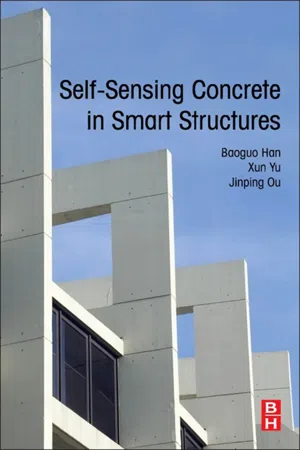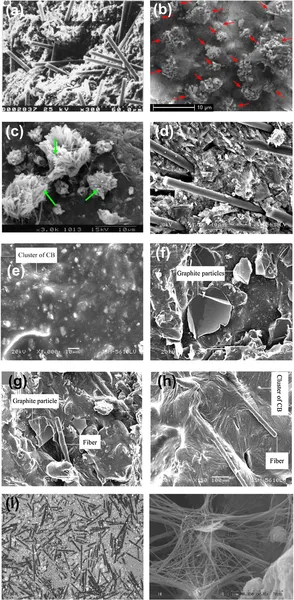
- 398 pages
- English
- ePUB (mobile friendly)
- Available on iOS & Android
Self-Sensing Concrete in Smart Structures
About this book
Concrete is the second most used building material in the world after water. The problem is that over time the material becomes weaker. As a response, researchers and designers are developing self-sensing concrete which not only increases longevity but also the strength of the material. Self-Sensing Concrete in Smart Structures provides researchers and designers with a guide to the composition, sensing mechanism, measurement, and sensing properties of self-healing concrete along with their structural applications- Provides a systematic discussion of the structure of intrinsic self-sensing concrete- Compositions of intrinsic self-sensing concrete and processing of intrinsic self-sensing concrete- Explains the sensing mechanism, measurement, and sensing properties of intrinsic self-sensing concrete
Frequently asked questions
- Essential is ideal for learners and professionals who enjoy exploring a wide range of subjects. Access the Essential Library with 800,000+ trusted titles and best-sellers across business, personal growth, and the humanities. Includes unlimited reading time and Standard Read Aloud voice.
- Complete: Perfect for advanced learners and researchers needing full, unrestricted access. Unlock 1.4M+ books across hundreds of subjects, including academic and specialized titles. The Complete Plan also includes advanced features like Premium Read Aloud and Research Assistant.
Please note we cannot support devices running on iOS 13 and Android 7 or earlier. Learn more about using the app.
Information
Structures of Self-Sensing Concrete
Abstract
Keywords
Filler phase; Interface phase; Matrix phase; Self-sensing concrete; Structure; Void and liquid phase1.1. Introduction and Synopsis
1.2. Structures of Self-Sensing Concrete at the Macroscopic Level


1.3. Structures of Self-Sensing Concrete at the Microscopic Level
1.3.1. Distribution of Functional Fillers in Concrete Matrix
Table of contents
- Cover image
- Title page
- Table of Contents
- Copyright
- Dedication
- Preface
- Chapter 1. Structures of Self-Sensing Concrete
- Chapter 2. Compositions of Self-Sensing Concrete
- Chapter 3. Processing of Self-Sensing Concrete
- Chapter 4. Measurement of Sensing Signal of Self-Sensing Concrete
- Chapter 5. Sensing Properties of Self-Sensing Concrete
- Chapter 6. Sensing Mechanisms of Self-Sensing Concrete
- Chapter 7. Applications of Self-Sensing Concrete
- Chapter 8. Carbon-Fiber-Based Self-Sensing Concrete
- Chapter 9. Nickel-Powder-Based Self-Sensing Concrete
- Chapter 10. Carbon-Nanotube-Based Self-Sensing Concrete
- Chapter 11. Challenges of Self-Sensing Concrete
- Index